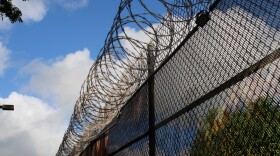A wildfire that has burned forestlands in a remote mountainous area of Central Oʻahu has moved eastward and away from population centers, Hawaiʻi authorities said, as firefighters continued to battle the blaze Friday.
The flames haven't threatened homes or property, and no evacuations have been ordered, but they have scorched some native koa and ʻōhiʻa trees.
The main part of the fire was about 4 miles from the Mililani Mauka housing area and was headed away in the southeast direction, the Honolulu Fire Department said in a statement Friday.
Nearly 2 square miles have been burned so far by the blaze, which firefighters have been battling since Monday. The fire was 50% contained on Friday morning.

Army helicopters were dropping water on the fire Friday, and helicopters from the Honolulu Fire Department and the U.S. Fish and Wildlife Service also doused flames from the air.
The HFD said a plan is in place if a change in the weather pattern affects the fire's behavior.
Fish and Wildlife Service ground crews from the continent are scheduled to begin work Saturday in the only accessible areas closest to the Mililani Mauka community.
Fire department investigators and the USFWS Office of Law Enforcement are investigating the cause of the fire.
A Hawaiʻi Emergency Management Agency hazard mitigation plan released this week said the state has experienced longer droughts during the past 30 years, creating more dangerous conditions for wildfires. The risk has increased further due to more frequent and intense El Niño events, which occur when parts of the Pacific Ocean warm and affect weather patterns worldwide, the report said.
Hawaiʻi's ecosystems evolved in the absence of frequent fires, and when native trees burn, they are often replaced by fire-prone invasive species.
In August, 99 people were killed and more than 2,000 structures were destroyed in Maui's historic town of Lāhainā when a wildfire fueled by powerful winds quickly spread from dry brush in the hills toward the ocean.






